Belcarra Garden Club
BC, Canada
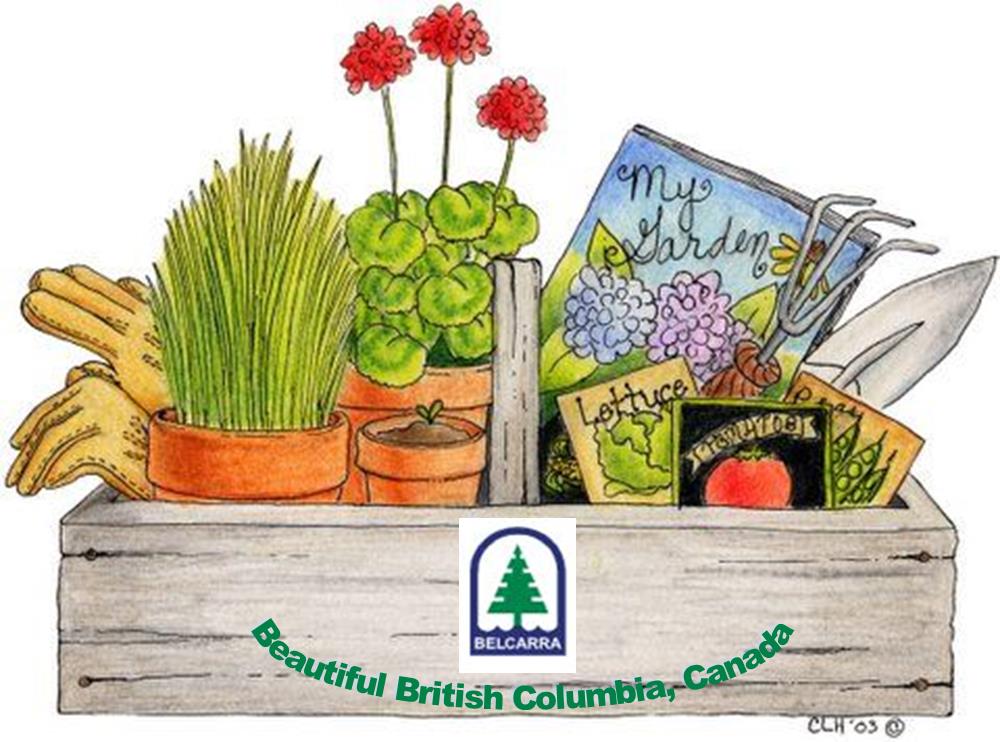
Introduction to Hydroponics
by Nora Boekhout
If you ever wondered what Hydroponic growing involves, you couldn’t ask for a more knowledgeable speaker than Andrew Vickerson from Les Verts Living. Andrew gave us a wonderful introduction and kindly answered all of our “novice” questions as well.
As you will have surmised, hydroponics substitutes a water-based nutrient solution instead of our typical soil-based substrates. It’s more involved than just watching roots develop in a jar of water though! Rock wool, vermiculite, cococoir, and hemp are just some of the media that are used, and nutrients are also added to the water. Lighting may be natural sunlight or artificial lighting such as LEDs.
Andrew pointed out four important benefits: Sustainability, Security, Stability, and Safety. Sustainability: This system uses 90% less water, 75% less fertilizer, doesn’t require pesticides, and reduces the need for imports. Security: Year-round food production at a lower cost is of benefit. Stability: Outdoor growers battle with fluctuations in water, light, temperature, and insects. Safety: Commercial (outdoor) leafy greens are notorious for passing on food borne illnesses.
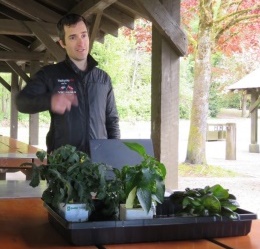 |
Andrew’s summary of “The Grocery Experience” gave us a chuckle, but most of us had to plead guilty on buying less than perfect food and then having to discard most of it. Hydroponics, on the other hand, excels at leafy greens, herbs, cucumbers, cherry tomatoes, and more! The produce is healthy, tastier, and in the long run, less expensive.
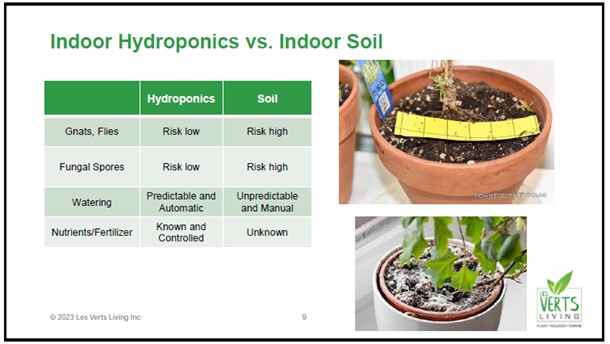 |
There are 6 common types of hydroponic systems and Andrew explained some of the fundamentals. Les Verts Living chose an “ebb & flow” system as it is easy to use and efficient. A simplified explanation is that a tray is filled with plants in a growing media (such as rock wool), a timed pump floods the tray with water and nutrients on a schedule, and gravity drains the solution down to the reservoir to be reused. Of course, there are maintenance requirements and checks to be done but after the system is set up, it takes about 10 minutes a week and 60 minutes every 2-3 months, to keep things running smoothly.

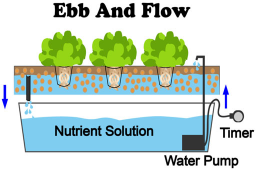
When you are considering a hydroponic system to purchase, make sure you converse with an expert (like Andrew!) rather than just purchasing an “off the shelf” expensive hydroponics system! Andrew noted that you should consider your available space and how many people are you growing for. You don’t need a sunny window, hard plumbing or a green thumb, says Andrew! But beware of advertisements that highlight their systems in a more ideal location (eg. a California greenhouse vs a Canadian basement setup!) There are also other factors to consider when choosing a system. The nutrients you provide need to be well-balanced and high quality. Light spectrum and intensity are vital so this is not the place to “go cheap”. The watering system of the unit can result in easy vs difficult cleaning routines. Airflow is another important component. Think about warranties, guarantees, reliability, and reservoir capacity. Some systems require you to only use their seeds and growing medium, which restricts your choice.
As we considered all these daunting elements to taking on the hydroponics challenge, Andrew returned his talk to some of the compelling reasons we should consider investing in hydroponic growing. We had little idea how our simple “grocery store veggies” had so many negative components! Conventional field grown veggies are chosen for being fast growing and transporting well, so taste and nutrition are secondary. Contaminants in water supplies are frequent, pesticides, fungicides, and herbicides are commonplace, and detergents and disinfectants are needed. Contaminants and nitrates travel through our underground water into the ocean. Did you know that Organic means no synthetic pesticides are used but natural pesticides are? Huge quantities of waste are incurred during the harvesting; produce is packaged in plastics and stored in warehouses to be trucked out to grocery stores where they sit until purchased. Leafy greens can lose 50% of their nutrients before consumption! Tonight’s salad and vegetables is going to be well-scrutinized by our club members for sure!
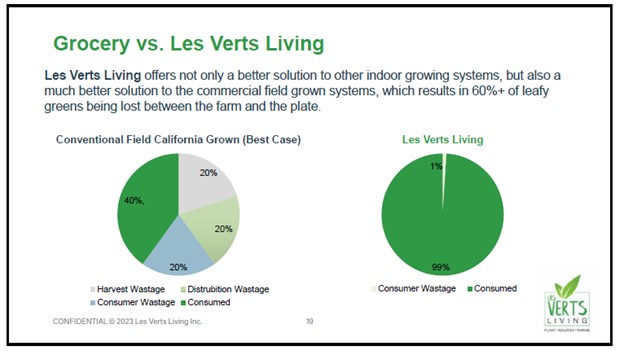 |
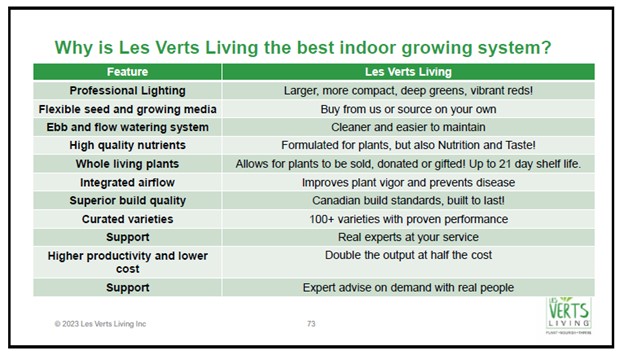
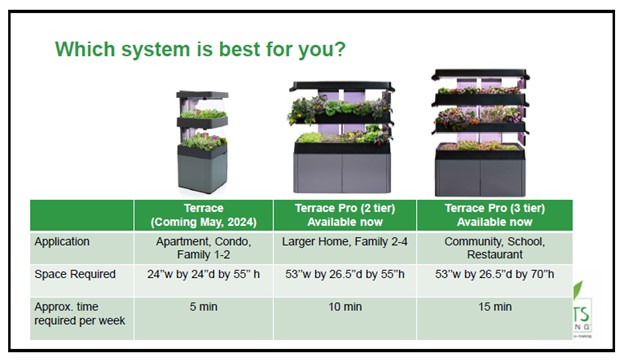
Thank you so much, Andrew, for your engaging presentation on hydroponic growing but also for giving us an eye-opener before we head out on our weekly grocery store trips! It definitely will encourage us to grow more of our own veggies, even if they are in plant pots! I’m sure we will also be taking a look at the Les Verts Living “home size” hydroponics system when it comes available!
RELATED LINKS
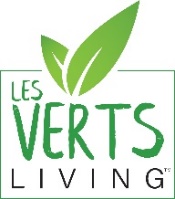
Les Verts Living – Plant, nourish, thrive
https://lesverts.com/
Frequently Asked Questions About Hydroponics & Vertical Farming – Les Verts Living
https://lesverts.com/hydroponic-growing-vertical-farming-faqs/
I'm only adding one extra link this time, as Andrew cautioned us that "the DIY system usually takes a lot of tinkering (sometimes for years) for beginners to figure it all out. This is great for the engineer types that like building more than growing." He also suggested that "some of these online sources tend to overpromise, underdeliver or miss a critical piece (e.g., lights), which can leave people discouraged."
That said, "the Spruce" website usually has some good information to offer and I've put links to them before, on other topics.
How to Start a Hydroponic Garden: 5 Methods (thespruce.com)
https://www.thespruce.com/beginners-guide-to-hydroponics-1939215